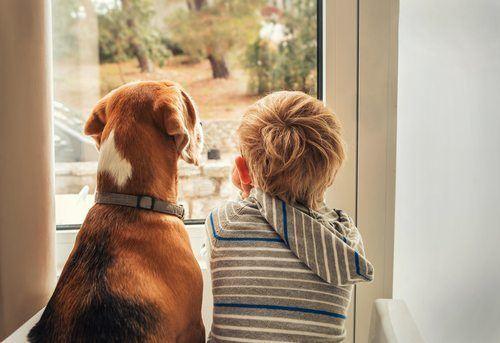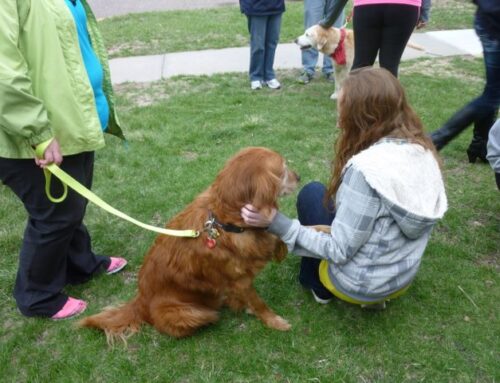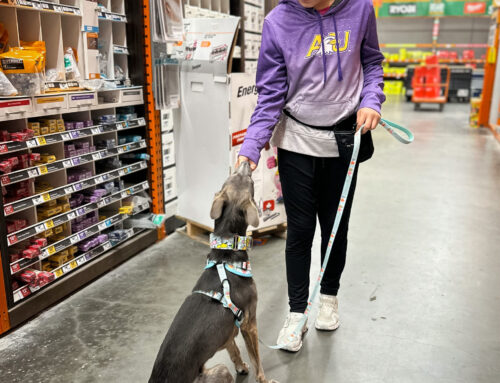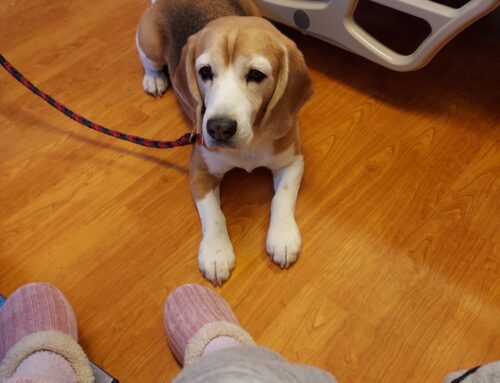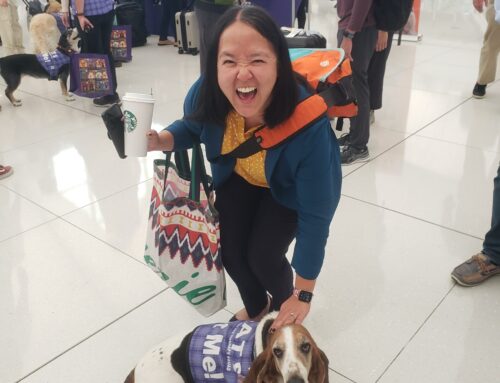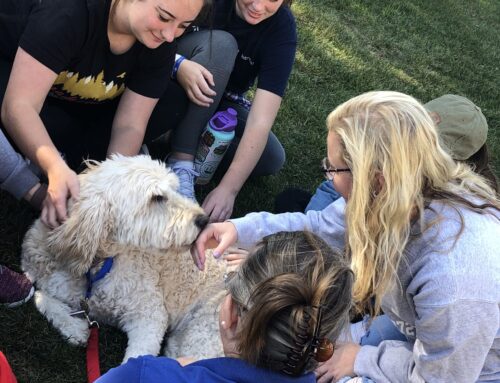As a therapy dog organization in the United States, the Alliance of Therapy Dogs is often asked by dog owners why they are being stalked by their dog. As anyone with a dog already knows, dogs are often inclined to follow their owners everywhere they go and to watch their every move, but there is actually more to this behavior than meets the eye. In this article, we will discuss the reasons why your dog follows you, its human benefit, recognizing when the following has gone too far, and indications of separation anxiety.
What are the Reasons Why My Dog Follows Me?
If your dog follows you around constantly, you will likely either find it incredibly endearing or you will be tired of almost tripping over him all the time. Either way, it helps to understand some of the science behind why your dog certification might be constantly at your side.
Reinforcement. Often dogs will follow their owners if their bond is paired over time with a great deal of reinforcement. For example, if a dog learns that good things, such as food, pats, and fun activities come from a particular person, they may be more likely to follow that person.
Breed traits. Some breeds, especially those that have been bred for centuries to work with people, are more likely to be “velcro dogs.” A velcro dog is one that follows you around and wants to be by your side at all times. Often called clingy, velcro dogs have a desire to be close to their owners.
Companionship. Perhaps the most obvious reason, some dogs simply prefer the companionship of their human owners. Over the process of domestication, natural selection has shaped dogs to become companions for humans. Domesticated dogs are now ‘bonded’ with humans in some of the same ways as children. In this sense, our bond with dogs is one that has evolved over the course of domestications.
Separation Anxiety. Separation anxiety is triggered when dogs become upset because of the separation from their owners. Dog separation anxiety is often unknowingly encouraged by dog owners. We make a big fuss when we leave or come home, and in doing so we reward the dog’s concern with our absence, provoking in him even more stress every time we leave.
How Does Following Me Benefit My Dog?
With all the time that your pet spends following you around, you might wonder if she’s actually getting anything good out of it. The human/animal bond works both ways. When a dog spends time with a person, the dog is likely to come in contact with reinforcement — things the dogs like, such as food rewards, petting, fun activities, and companionship.
The time that your dog spends studying your every move also helps her to understand you better, which can help her better interpret the meaning behind your actions. Given all the research to support a unique adaption to understand human gestures, language, and tone, it is no wonder that dogs often look like they are studying our movements. They are watching our every move to see if we give them clues as to our intentions, or to catch us communicating with them. In this way, they could anticipate that it is time for a walk, or see that you are getting ready to leave, or perhaps that it is dinnertime. They have become the animal kingdom’s human language experts — both physical and spoken language.
What is the Human Benefit of My Dog Following Me?
People also benefit from being close to a dog. A loving dog prevents loneliness, and when a dog wants to play and exercise, the owner can benefit from the activity. Dogs who want to be near us make us feel loved, and everyone can benefit from a healthy dose of unconditional love. It is not just your amorous feelings that improve when you are near your dog, though. Several studies have shown that even brief interactions with dogs reduce anxiety and improve mood. Dogs can also improve our health — they improve our heart health, keep us exercising more regularly, reduce stress, and even can help detect diseases like cancer.
In addition, dogs’ uncanny ability to display the understanding of our cues is the catalyst for our bonding to them, and may even be why we have evolved to where we are today. Dogs are our ‘best friends’ because they understand us and we can communicate with them. Many researchers believe that it was this ability to understand our wants and wishes that helped humanity thrive during the agricultural revolution.
How Will I Know if My Dog’s Following Has Gone Too Far?
While it is healthy for a dog to look to his owner for commands and cues, it could be unhealthy when a dog cannot stop following or looking at his owner. This is especially concerning if the dog has chosen only one particular person to interact with and is fearful or avoids all other people. In these cases, the dog may be improperly socialized or might have overly bonded to one person. These dogs are at risk of developing social or separation anxiety, fear aggression, or other behavioral issues.
If you think your dog may be suffering from anxiety when you are not around, we recommend leaving an interactive toy to help divert your dog’s attention from your absence or leaving a radio or television playing when you are out of the house. If those distractions do not work, you could try desensitization, a behavioral solution to separation problems. The owner should leave for a very short period of time, like seconds, then come back to the house. Over many trials, the length of time the owner is gone is extended, until hopefully your dog gets so used to the idea of you being gone, it no longer bothers him.
What are the Indications of Separation Anxiety in Dogs?
Aggression. By far the most dangerous symptom of dog anxiety is aggression and it can be targeted directly or indirectly, depending on the situation. Direct aggression occurs when a dog acts aggressively toward people or other animals. Indirect aggression can be equally dangerous and often happens when a person comes between the dog and the source of the dog’s aggression, such as another dog. Even if a dog is prevented from harming others, aggressive behaviors such as growling or barking can lead to dangerous situations for humans and dogs, alike.
Urinating and defecating in the house. This is a common symptom of separation anxiety. Anxious dogs often work themselves up to the point that they pee or poop in the house, even if they are housebroken. This is frustrating for owners and can cause damage to property, not to mention the unpleasantness of the cleanup.
Destructive behavior. This is also common with separation anxiety. The damage is usually located around entry and exit points, like doorways and windows, but dogs in a state of heightened anxiety are also at risk of harming themselves. Attempts to break out of dog crates, windows, and even doors can result in painful injuries and expensive veterinary treatments.
Depression. It is not uncommon for pets to get down, especially during periods of change, however, it is rare for dogs to suffer from long-term depression. Dog depression symptoms are very similar to those in people; they become withdrawn, inactive, and their eating and sleeping habits often change, and do not participate in the things they once enjoyed.
If your pup follows you to the point of stalking, it may be time to take action. Becoming a “velcro dog” could be the result of more than love, it could be a health issue. If you would like to learn more about your dog’s behaviors or become a member of our organization, contact the Alliance of Therapy Dogs.

